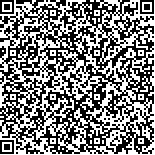| 引用本文: | 沈蒙,宋若兰,简伟杰,邓清月,吕芳,于继平,杨玉磊,折改梅.基于VOSviewer和Citespace可视化图谱分析党参的研究现状与发展趋势[J].中国现代应用药学,2023,40(24):3473-3484. |
| SHEN Meng,SONG Ruolan,JIAN Weijie,DENG Qingyue,LYU Fang,YU Jiping,YANG Yulei,SHE Gaimei.Research Status and Trends of Codonopsis Radix Based on VOSviewer and Citespace Visual Graph[J].Chin J Mod Appl Pharm(中国现代应用药学),2023,40(24):3473-3484. |
|
| |
|
|
| 本文已被:浏览 1242次 下载 717次 |

码上扫一扫! |
|
|
| 基于VOSviewer和Citespace可视化图谱分析党参的研究现状与发展趋势 |
|
沈蒙1, 宋若兰1, 简伟杰2, 邓清月1, 吕芳1, 于继平1, 杨玉磊1, 折改梅1
|
|
1.北京中医药大学, 北京 100029;2.北京电子科技职业学院, 北京 100176
|
|
| 摘要: |
| 目的 采用文献计量学方法分析总结党参的研究历史、发展现状、趋势热点。方法 检索并筛选1992年1月1日—2022年6月30日中国知网(CNKI)数据库和Web of Science数据库核心集党参相关文献。选用VOSviewer和CiteSpace软件从发文量、作者、机构、国家、基金资助、发文期刊、被引频次、关键词、聚类、突现词方面进行可视化分析,并绘制可视化图谱。结果 共纳入有效文献594篇,中文文献484篇,英文文献110篇。中、英文文献发文量整体呈上升趋势。中、英文文献发文量最多的学者分别是高建平和ZOU Yuanfeng。中国是发表党参研究最多的国家。山西医科大学药学院和中国科学院分别是中、英文文献发文量最多的机构。党参相关研究基金资助最多的是国家科学自然基金。接收中、英文文献最多的期刊分别是《中药材》和International Journal of Biological Macromolecules。中文文献引用频次最高的是1篇对党参化学成分和药理作用总结归纳的综述性文章,英文文献引用频次最高的是关于党参多糖结构鉴别及药理作用的研究报道。中文文献的关键词、聚类、突现词图谱显示组方配伍、资源种植、药理作用、质量控制是党参研究的主要方向。英文文献关键词、聚类、突现词图谱表明党参研究始终围绕其活性成分物质基础及作用机制研究。结论 党参研究的发文量总体呈上升趋势,研究机构主要分布在中国的各个高校和科研院所,中、英文文献研究方向各有侧重,活性成分的药理作用研究是共同的趋势热点。 |
| 关键词: 党参 文献计量学 可视化分析 研究热点 研究趋势 |
| DOI:10.13748/j.cnki.issn1007-7693.20224247 |
| 分类号:R285.1 |
| 基金项目: |
|
| Research Status and Trends of Codonopsis Radix Based on VOSviewer and Citespace Visual Graph |
|
SHEN Meng1, SONG Ruolan1, JIAN Weijie2, DENG Qingyue1, LYU Fang1, YU Jiping1, YANG Yulei1, SHE Gaimei1
|
|
1.Beijing University of Chinese Medicine, Beijing 100029, China;2.Beijing Polytechnic, Beijing 100176, China
|
| Abstract: |
| OBJECTIVE To analyze and summarize the research history, development status, trends and hotspots of Codonopsis Radix by bibliometrics. METHODS Search and screen the related literatures of Codonopsis Radix from the CNKI database and the Web of Science core collection database from January 1, 1992 to June 30, 2022. VOSviewer and CiteSpace softwares were used for visual analysis of the number of publications, authors, institutions, countries, funding funds, published journals, literature citation frequency, keywords, clustering and emergent word, and a visual graph was drew. RESULTS A total of 594 effective literature, 484 in Chinese and 110 in English were included. GAO Jianping and ZOU Yuanfeng were the scholars with the largest amount of Chinese and English literature. China was the country with the most published researches on Codonopsis Radix. The School of Pharmaceutical Science of Shanxi Medical University and the Chinese Academy of Sciences were the institutions with the largest number of Chinese and English literature publications respectively. The National Science Foundation of China was the largest fund to support the research of Codonopsis Radix. The journal that received the most Chinese and English literature were Journal of Chinese Medicinal Materials and International Journal of Biological Macromolecules respectively. The most frequently cited Chinese literature was a summary of the chemical constituents and pharmacological effects of Codonopsis Radix. The most frequently cited English literature was a study on the structure identification and pharmacological effects of Codonopsis Radix polysaccharides. The map of key words, clustering and emergent words in Chinese literature showed that the main research directions of Codonopsis Radix were compatibility formula, resource planting, pharmacological action and quality control. The map of key words, clustering and emergent words in English literature indicated that the study of Codonopsis Radix always focused on the material basis and mechanism of its active ingredients. CONCLUSION The annual publications on of Codonopsis Radix show an increasing trend, and the main research institutions are distributed in many universities and research institutes in China. Both Chinese and English literature have their own research directions, and the pharmacological effects of active ingredients are the common trend hotspots. |
| Key words: Codonopsis Radix bibliometric visual analysis research hotspot research trend |
|
|
|
|
